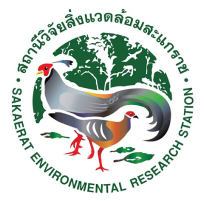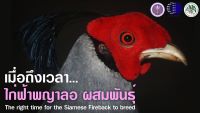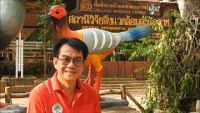Keywords :
Anticancer; arborinine; traditional herbal; medicine
บทคัดย่อ :
Context: Glycosmis parva Craib (Rutaceae) is reported to have cytotoxic and anti-inflammatory
activities by decreasing COX-2 expression.
Objective: To investigate the effect of G. parva on human colorectal cancer cells expressing
COX-2, HT-29 cells.
Materials and methods: HT-29 cells were treated with ethyl acetate extract from the leaves of
G. parva (GPE 6.25-100 mg/ml) for 24-72 h. Cell viability was evaluated by the resuzurin
reduction assay. An apoptotic study was performed using annexinV/FITC-PI staining. The cell-
cycle pattern was investigated by PI staining. The expression of BCL-2 family genes was
analyzed by quantitative RT-PCR and expression of cyclins and COX-2 were done by RT-PCR.
Results: GPE at 6.25-100 mg/ml reduced HT-29 cell viability with IC50 values of 69.49, 55.89,
and 48.94 mg/ml at 24, 48, and 72 h, respectively. HT-29 apoptosis was induced by 18.23% at
100 mg/ml. Cells in S phase decreased by 5.22% and 13.28% at 50 and 100 mg/ml, respectively,
causing G0/G1 (10.6% at 50 mg/ml) and G2/M (15.67% at 100 mg/ml) accumulation. GPE at
50 mg/ml downregulated cyclin A (11.46%), cyclin E (17.98%), BCL-2 (0.32-fold), and COX-2
(29.06%) expression with an increased BAK expression (1.79-fold).
Discussion and conclusion: GPE reduced HT-29 cell viability, inhibited cell proliferation, induced
apoptosis, and arrested the cell cycle. Underlying mechanisms may involve decreases in COX-2,
cyclin A, and cyclin E expression in addition to changes in BCL-2 family gene expression.
Fundamental knowledge of GPE anticancer effects found in this study could lead to future use
of this compound for colorectal cancer treatment.
เอกสารอ้างอิง :
Buranabunwong, N., Ruangrungsi, N., Chansriniyom, C. and Limpanasithikul, W., 2014. Ethyl acetate extract from Glycosmis parva leaf induces apoptosis and cell-cycle arrest by decreasing expression of COX-2 and altering BCL-2 family gene expression in human colorectal cancer HT-29 cells. Pharmaceutical biology, 53(4), pp.540-547.



